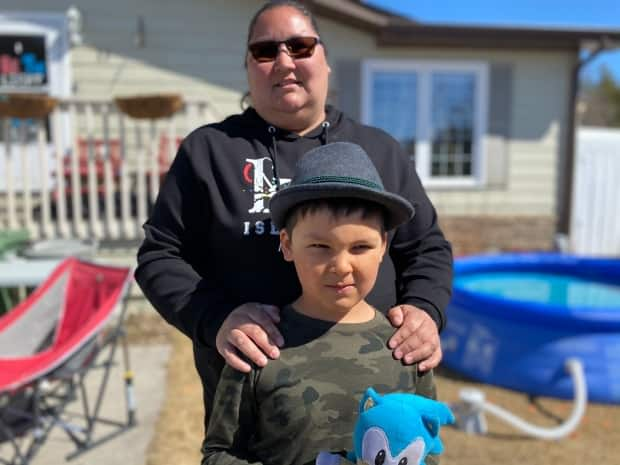School closures 'not ideal' but will help prevent further transmission of COVID-19: N.W.T. gov't

Renee Sanderson was still processing the news that Yellowknife schools would be closed the next day as one of her children was being picked up from after school care on Monday.
"I was in shock. It's kind of disappointing that we have to do this," Sanderson said.
"I understand the reasons behind it but for myself having two kids still on the autism spectrum, it's harder for us."
Sanderson is one of many parents who had just over 12 hours to figure out how to go back to remote learning as of Thursday.
But parents in Yellowknife, Ndılǫ and Dettah are not the only ones coping with remote learning. Schools are closed in Behchokǫ̀ and Whatı̀ due to local containment orders. Students in Fort Good Hope and Tulita will stay at home until at least this Friday. Students in Colville Lake and Délı̨nę will be out of school until Oct. 1. Mackenzie Mountain School in Norman Wells was scheduled to reopen Wednesday, following the expiration of that community's containment order Sept. 14.
In a Monday news release, the Office of the Chief Public Health Officer (OCPHO) said the school closure in the capital was a result of public health in Yellowknife falling behind in testing and contact tracing.
Speaking Tuesday, Education Minister R.J. Simpson said the closure was entirely preventative.
"We recognize that this situation is not ideal for learning and will undoubtedly cause a great deal of stress for many people," he said. "However, our number one priority continues to be the health and safety of our students, staff and communities."
Simpson said remote learning will differ based on students' grade levels and individual needs. Some will access it on online platforms, paper based packets or both.
Mom in denial
Sanderson said her husband was more prepared than she was that schools would close, and "that she was in a little bit of denial of "this is not going to happen"" since the government's goal was to keep the schools open as long as possible.
Both her children attend NJ McPherson, and she said they're lucky in the sense that her husband has been working from home and since she works for the school district she will also now be home.
However, she feels for the parents who don't have that option and were hustling to make plans last minute.
"They are just scrambling," said Sanderson.
"Trying to get a routine back in place right away, because that's what my kids thrive on is routine."
Sanderson has two children on the autism spectrum and said in-person learning gives them extra support that she doesn't have at home.
"The first time around was really difficult. We ended up spending 24 days in isolation. We had multiple meltdowns throughout the day… it was just really stressful," said Sanderson.
"Now with going two weeks (of remote learning), it's just going to be hard and difficult for us to keep them busy and keep that routine going."

